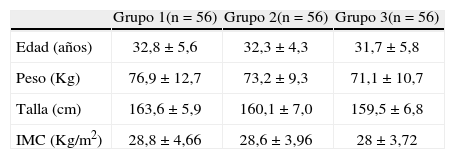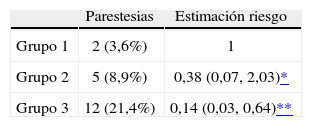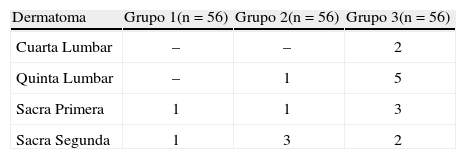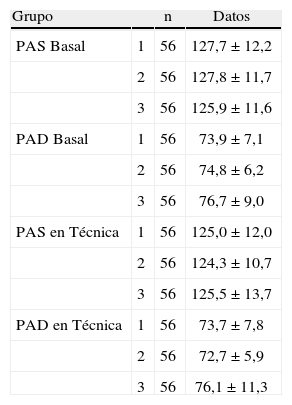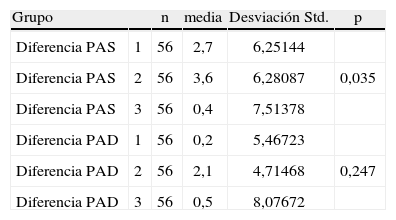Determinar la incidencia de parestesias durante la punción lumbar según la posición adoptada por el paciente.
Material y métodosEstudio simple ciego, prospectivo y aleatorizado en pacientes programadas para cesárea electiva distribuidas en 3 grupos. Grupo 1: paciente sentada en la dirección del eje largo de la cama apoyando sus talones sobre la misma; grupo 2: paciente sentada en dirección perpendicular al eje largo de la cama, con las piernas colgando; y grupo 3: paciente en decúbito lateral izquierdo. Las punciones lumbares se realizaron con aguja 27-G Whitacre.
ResultadosSe incluyeron 168 pacientes (56 por grupo). Las parestesias fueron más frecuentes en el grupo 3 (p=0,009). No objetivamos cambios entre los valores de presión arterial en decúbito y tras adoptar la posición de punción. Tampoco encontramos diferencias entre grupos en la presión arterial según la postura adoptada para realizar la punción.
DiscusiónLa punción en sedestación apoyando los talones sobre la cama, con ligera flexión de rodillas presenta menor número de parestesias que la punción realizada en sedestación pero con las piernas colgando. Los talones sobre la cama producen una flexión de la cadera con un desplazamiento de las raíces nerviosas dentro del saco dural a una posición más anterior. Este desplazamiento aumentaría el área libre de raíces nerviosas en la zona posterior del saco dural disminuyendo la posibilidad de parestesias durante las punciones lumbares. La posición en decúbito lateral izquierdo aumentaría la posibilidad de parestesias, posiblemente porque la aguja se desvía de la línea media de forma inadvertida.
Paresthesia and spinal anesthesia for cesarean section: comparison of patient positioning
To determine the incidence of paresthesia during lumbar puncture performed with the patient in different positions.
Material and MethodsA single-blind prospective study of patients scheduled for elective cesarean section, randomized to 3 groups. In group 1 patients were seated in the direction of the long axis of the table, with heels resting on the table. In group 2 they were seated perpendicular to the long axis of the table, with legs hanging from the table. In group 3 they were in left lateral decubitus position. Lumbar punctures were performed with a 27-gauge Whitacre needle.
ResultsOne hundred sixty-eight patients (56 per group) were enrolled. Paresthesia occurred most often in group 3 (P=.009). We observed no differences in blood pressure after patients moved from decubitus position to the assigned position. Nor did we observe between-group differences in blood pressure according to position taken during puncture.
ConclusionPuncture undertaken with the patient seated, heels on the table and knees slightly bent, is associated with a lower incidence of paresthesia than puncture performed with the patient seated, legs hanging from the table. Placing the patient’s heels on the table requires hip flexion and leads to anterior displacement of nerve roots in the dural sac. Such displacement would increase the nerve-free zone on the posterior side of the sac, thereby decreasing the likelihood of paresthesia during lumbar puncture. A left lateral decubitus position would increase the likelihood of paresthesia, possibly because the anesthetist may inadvertently not follow the medial line when inserting the needle.
Artículo
Comprando el artículo el PDF del mismo podrá ser descargado
Precio 19,34 €
Comprar ahora






